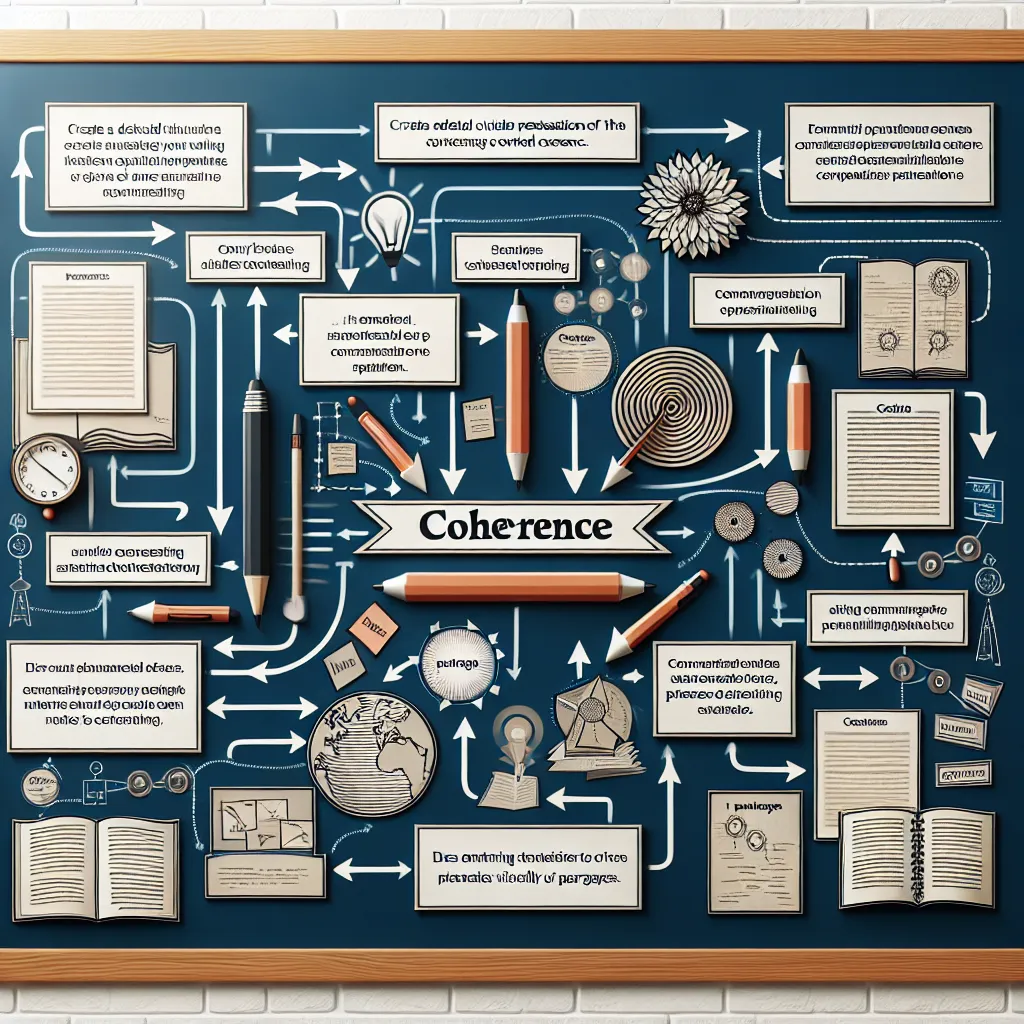Are you preparing for the PTE Academic exam and struggling with the writing section? One of the key factors that can significantly impact your score is coherence. In this comprehensive guide, we’ll explore effective strategies to enhance coherence in your PTE writing tasks, helping you achieve a higher score and improve your overall performance.
Understanding Coherence in PTE Writing
Coherence refers to the logical flow and connection of ideas in your writing. It’s about ensuring that your thoughts are presented in a clear, organized manner that’s easy for the reader to follow. In the context of PTE writing tasks, coherence is crucial for demonstrating your ability to communicate effectively in English.
 Coherence in PTE Writing
Coherence in PTE Writing
Why Coherence Matters in PTE Writing
- Improves readability: A coherent essay is easier to understand and follow.
- Demonstrates language proficiency: Well-structured writing showcases your command of English.
- Boosts your score: Coherence is a key marking criterion in PTE writing tasks.
- Enhances overall communication: Clear, logical writing effectively conveys your message.
Strategies to Improve Coherence in PTE Writing
1. Plan Your Essay Structure
Before you start writing, take a few minutes to outline your essay. This helps ensure a logical flow of ideas from start to finish.
- Brainstorm main points
- Organize ideas in a logical sequence
- Create a basic outline with introduction, body paragraphs, and conclusion
2. Use Clear Topic Sentences
Begin each paragraph with a clear topic sentence that introduces the main idea of that paragraph. This helps the reader understand the purpose of each section and how it relates to your overall argument.
Example:
“One significant advantage of public transportation is its positive impact on the environment.”
3. Employ Transitional Phrases
Use transitional words and phrases to connect ideas within and between paragraphs. This creates a smooth flow in your writing.
Examples of transitional phrases:
- Furthermore
- In addition
- On the other hand
- Consequently
- In conclusion
4. Maintain Consistent Tense and Point of View
Stick to a consistent tense and point of view throughout your essay. Sudden shifts can confuse the reader and disrupt coherence.
Example of consistency:
“Cities are becoming increasingly crowded. This overcrowding leads to various problems, including traffic congestion and housing shortages.”
5. Use Pronoun References Carefully
When using pronouns, ensure they clearly refer to the intended antecedent to avoid confusion.
Example of clear pronoun reference:
“Many students find mathematics challenging. They often struggle with complex equations and abstract concepts.”
6. Develop Paragraphs Logically
Each paragraph should focus on a single main idea and include supporting details that relate directly to that idea.
- Start with a topic sentence
- Provide supporting evidence or examples
- Explain how the evidence relates to your main point
- Conclude with a transition to the next paragraph
7. Create Strong Connections Between Ideas
Ensure that each sentence and paragraph logically follows from the previous one. Use linking words and phrases to show relationships between ideas.
Example of connected ideas:
“Regular exercise has numerous health benefits. Firstly, it improves cardiovascular health. Additionally, it helps maintain a healthy weight. Moreover, physical activity can boost mental well-being.”
 PTE Writing Coherence Example
PTE Writing Coherence Example
8. Practice with Sample Essays
Analyze sample essays that demonstrate good coherence. Pay attention to how ideas are connected and how paragraphs flow from one to another.
9. Use Templates Wisely
While templates can be helpful, avoid overreliance on them. Use them as a guide for structure, but ensure your content is original and flows naturally.
10. Revise and Edit for Coherence
After writing your first draft, take time to revise specifically for coherence:
- Check that each paragraph has a clear main idea
- Ensure ideas flow logically from one to the next
- Add or adjust transitional phrases where necessary
- Remove any irrelevant information that disrupts the flow
Common Mistakes to Avoid
- Jumping between ideas without clear connections
- Including irrelevant information that doesn’t support your main points
- Overusing transitional phrases, making the writing feel forced
- Neglecting to provide examples or evidence to support your arguments
- Writing overly long or complex sentences that are difficult to follow
Next Steps for Improving Your PTE Writing
- Practice regularly: Set aside time each day to work on your writing skills.
- Seek feedback: Have others review your essays and provide constructive criticism.
- Read extensively: Exposure to well-written texts can improve your own writing style.
- Take PTE practice tests: Familiarize yourself with the exam format and timing.
- Review official PTE scoring guides: Understand exactly what examiners are looking for in terms of coherence.
By implementing these strategies and avoiding common pitfalls, you can significantly improve the coherence of your PTE writing tasks. Remember, coherence is not just about using fancy words or complex structures; it’s about clearly and logically presenting your ideas in a way that’s easy for the reader to follow.
With consistent practice and attention to these aspects of writing, you’ll be well on your way to achieving a higher score in the PTE writing section. Keep refining your skills, and don’t hesitate to seek additional resources or professional guidance if needed. Good luck with your PTE preparation!




